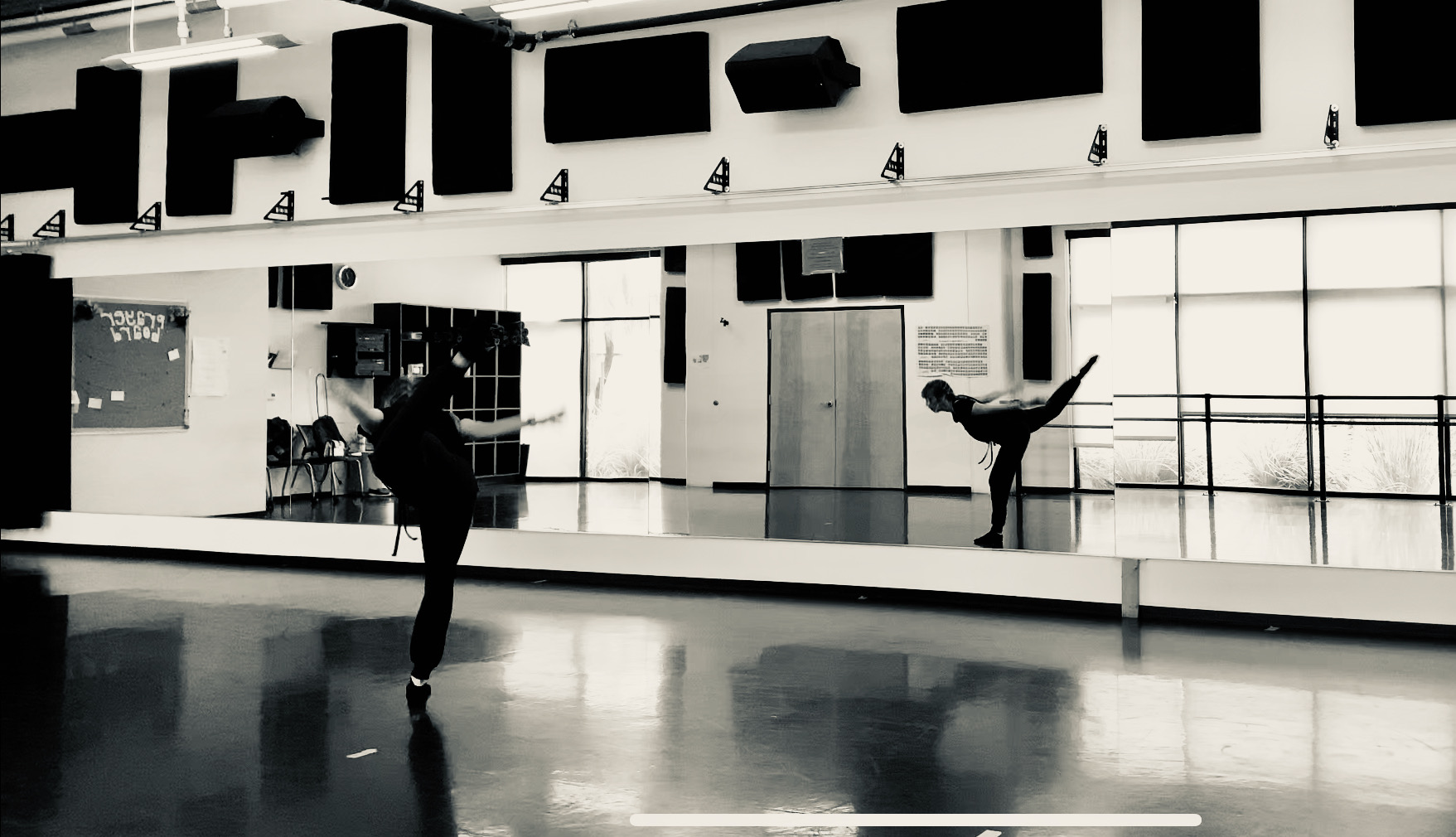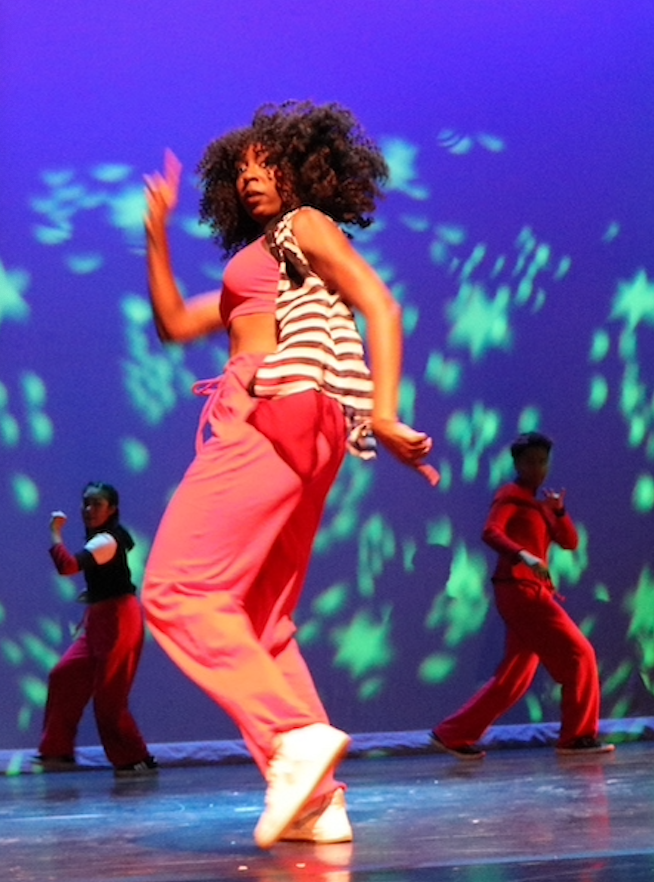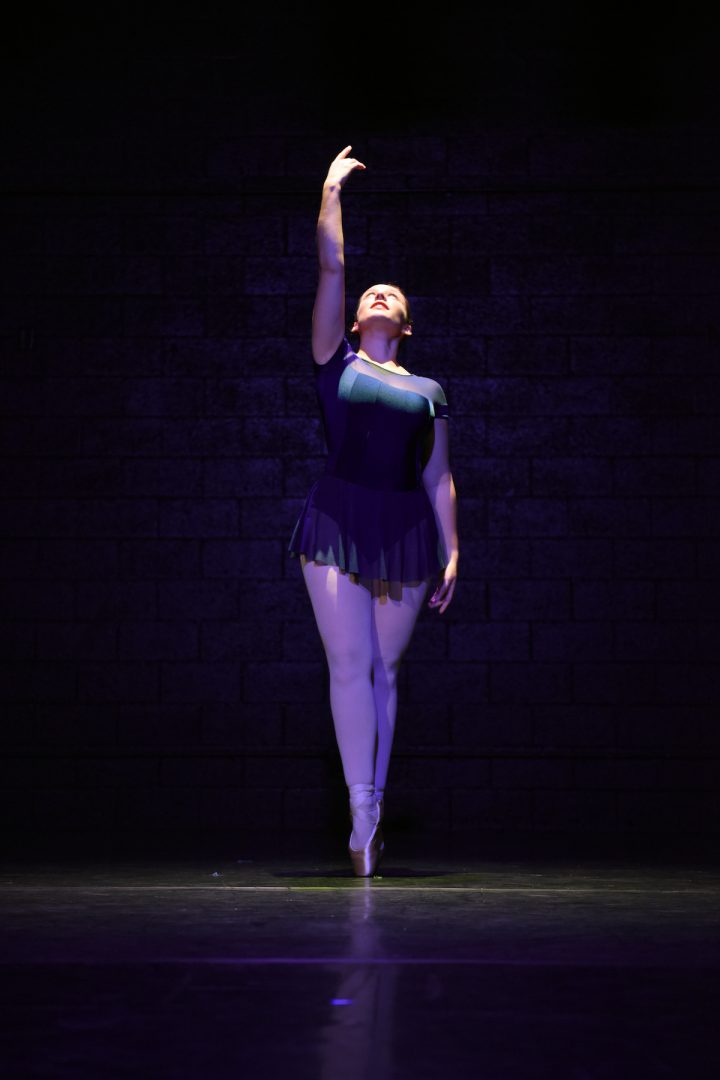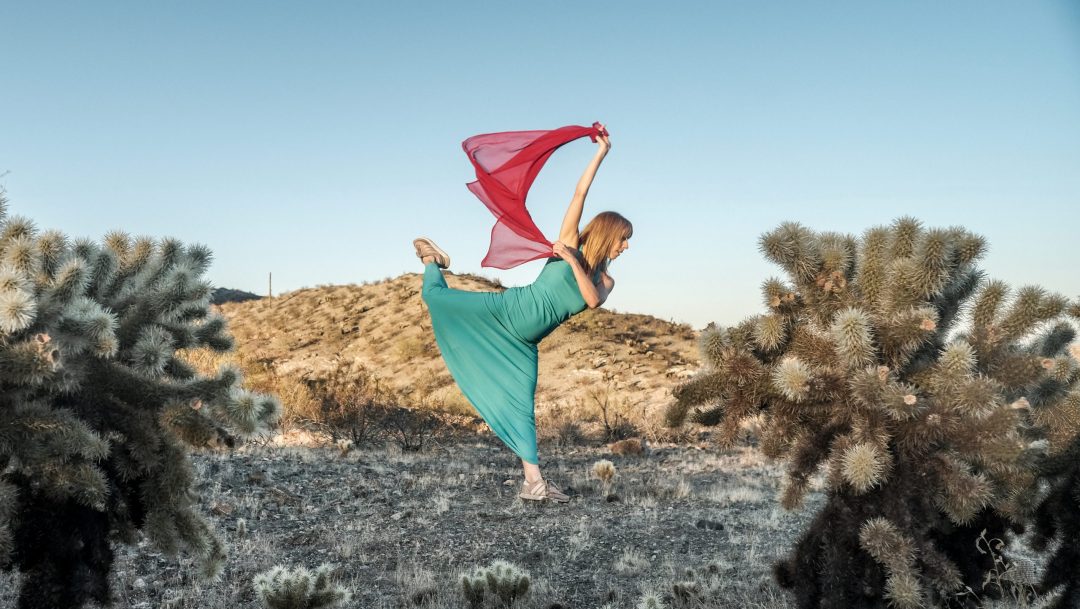
“It’s so comforting to know that I have a professor who cares for me and hopes to see me succeed. It made a huge difference in my semester just knowing I could come to a class where I knew my instructor would be happy and encouraging.”
— Anonymous student response from end-of-course survey
Classes in the Tucson area are continuing in 2025!
More info coming soon!
I teach the following dance classes:
Dunham Technique

Dunham Technique is an interdisciplinary dance technique that includes foundational references from the African Diaspora including Haitian, Cuban, and Brazilian dances, in addition to modern, jazz, and ballet.
Katherine Dunham (1909 – 2006) began to organize aspects of the technique around 1931. Part of a holistic system aimed at developing the whole person, a Dunham Technique class is structured to economize movement and energy, addressing breath and isolations. Class is traditionally accompanied by a drum ensemble.
Barre and center work includes classical exercises such as fall and recovery, body rolls, heel presses, and leg swings. Moving across the floor with progressions, students follow the drums’ polyrhythms and slowly build upon basic movements, adding turns and elevation when dancers are ready. Choreography is taught with an eye toward the future, exploring Dunham’s vocabulary within a thematic context or a musical style.
(I have been a certified Dunham Technique instructor since 2012. Please visit the Institute for Dunham Technique Certification to learn more about the organization through which I was certified at www.DunhamCertification.org)
Jazz Dance

Jazz dance originated in the United States on a path parallel to jazz music and it is rooted in African-American life. Authentic jazz dances like the lindy hop feature vibratory, percussive, and swinging movements. Dancing with a partner was a feature of the original swing dance, lindy hop, while solo forms became more popular in the eras that followed.
My class structure represents a confluence of my inspirations including authentic jazz dances of the 20th century, the techniques of Katherine Dunham and Gus Giordano, rhythm tap, house, and contemporary trends in dance.
Because of the highly contrasting movements and quick shifts that I demand of dancers in my choreography, my concert jazz class is designed to develop an impermeable core muscle system while allowing for the liberation of the pelvis and spine. Starting with a whole-body warm-up, students progress through a series of exercises that build focus, dynamic energy, balance, and musicality.
Here’s a free warm-up video a la Dunham Jazz. It’s a pretty full warm-up to Everybody Loves The Sunshine by Takuya Kuroda (original Roy Ayers composition- may Ayers rest in peace).
Modern and Contemporary Dance

Experience ever-expanding ease as you focus on your breath and MOVE. In this class, you will be encouraged to rely upon your sense of inner authority. Modern dance is a concert dance tradition that emerged in the Modern Era, signaling the early twentieth century’s turn toward the avant-garde.
The earliest innovators of modern dance were idiosyncratic movers who would reject old traditions in favor of building new perceptions of dance and what it can represent.
The aesthetic of contemporary dance may be harder to identify, perhaps because it integrates movement from so many backgrounds, including global trends and practices.
I draw from a variety of codified techniques and perspectives to offer a class that is earthbound, dynamic, and musically driven. Classes begin on the floor and progress to standing warm-up. Center and traveling exercises focus on breath, rhythm, shape, spinal articulation, and movement quality. Material for all learners will integrate safe approaches for practicing inversions and weight-sharing as well as improvisation and creative collaboration.
Classical Ballet

Do you want to understand how to approach ballet through a healthy perspective that doesn’t require you to fit a particular mold based on body type hierarchies? If so, you’ll love this class. I will use common expressions as well as anatomically correct terms to explain what the body is doing internally to achieve the positions and movements of classical ballet. Students are often told to create a certain shape with their bodies, but they are not told how to attain it. How high can my leg be lifted in any direction without tilting the hips? How much are the gluteals involved in turnout? Accompanied by classical music, the class will move through barre, center, and across-the-floor exercises. Whatever your previous training, you will develop both ease and precision, which you can apply to every aspect of life.
In addition to these studio-based courses, I teach the following Workshop Series:
Movement And Healthy Communities
If there has been one up-side to the COVID-19 era, it may be that 7 in 10 people say they will continue cooking at home. As the pandemic has loosened its grip on our lives, do we still hold ourselves accountable for maintaining the positive habits we learned? Can we learn to cook and enjoy whole, unprocessed foods? Absolutely! Sukie Keita is a movement-based educator who is passionate about holistic health and plant-based cooking. Strategies from the #MovementAndHealthyCommunities series are designed to empower people to establish healthy relationships with food, which they can soon share with others. In this four-part online series, our focus is building our health within an encouraging community. Participants will be encouraged to come to each session ready to move their bodies. Frequent movement breaks will keep our brains fresh as we connect the dots between our food choices and the media we consume, separating facts from myths. We will break down health and wellness topics into manageable bites as we move, groove, and build motivation to make positive changes in our lives! Whether time, money, or know-how is your biggest challenge, the #MovementAndHealthyCommunities Workshop Series will inspire your next big move.
“Carrying on Through Cross-Currents”: Exploring Anti-Racist Pedagogy in Arts Learning Contexts
Employing a focus on anti-racist pedagogy and a storyteller’s capacity for nuance, facilitator Sukie Keita will invite participants to ask how to best maintain their walk toward equity within educational spaces where the arts are taught. Gaps in our educational systems that impact marginalized communities are becoming more and more pronounced, but opportunities for learning through the arts have proven impact.
Leveraging her experience as a dance educator, Keita and workshop participants will set agreements toward a co-creative climate in which they can explore how to navigate barriers, cultivate stamina, highlight the power of the counter-narrative, and more. Throughout the session, stories of educators who have received varying degrees of pushback for addressing students’ needs in responsive and meaningful ways, or for advocating for students’ rights to learn in an environment free from harm, will be shared. Illinois-based education leader Stacey Davis Gates offered this sage advice: “This work is never going to give us the love, respect, and deference we deserve. It is also the right thing to do.”
This session’s essential questions will address how to foster self-agency in our students and resilience within ourselves.
- How can I be a more effective anti-racist arts educator?
- What is the difference between culturally responsive and anti-racist pedagogy?
- What are the consequences of owning my anti-racist practice in the classroom?
- How do I become accountable toward the communities most impacted by social injustice in my community today?
NOTES:
Patrisse Cullors’s book, 12 Steps to Changing Yourself and the World: An Abolitionist’s Handbook, which she describes as a “framework for how everyday activists can effectively fight for an abolitionist present and future,” is recommended as a resource.
